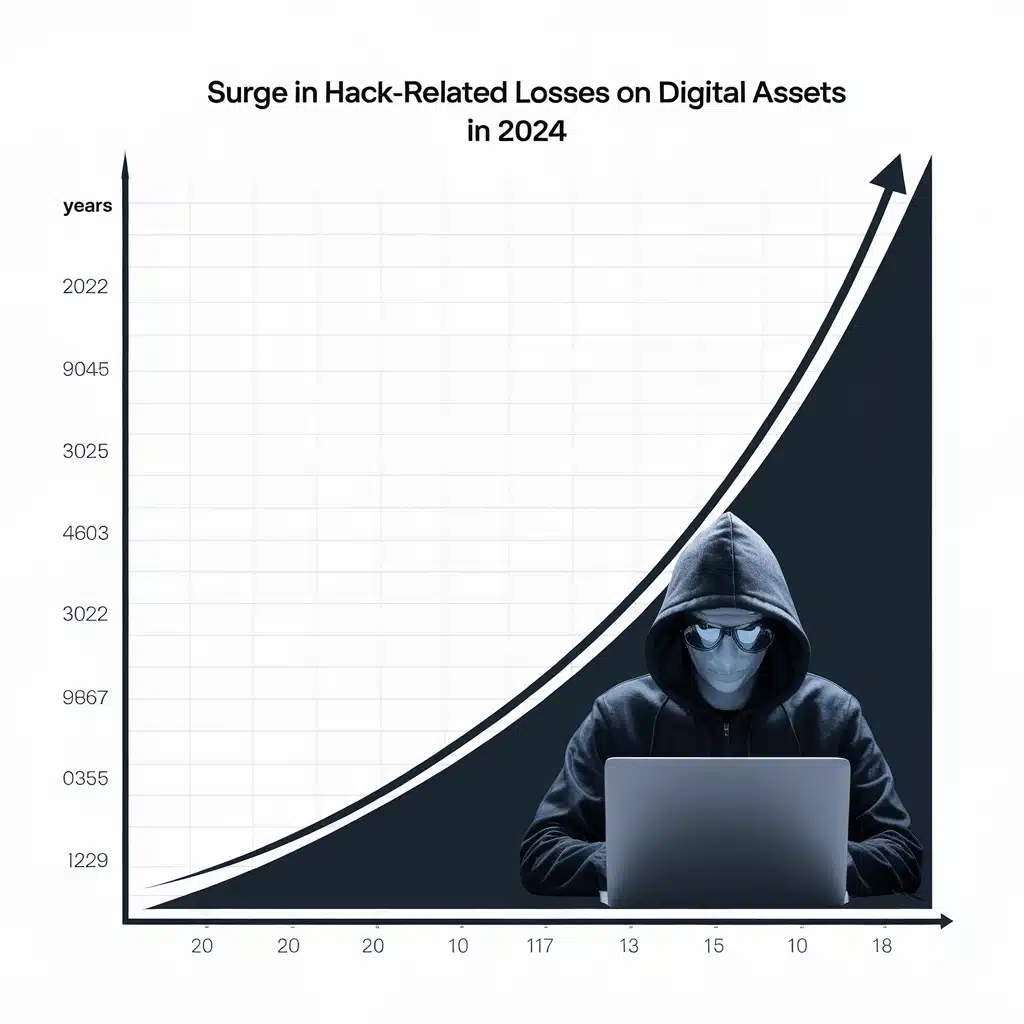According to a recent report from Cyvers, centralized and decentralized digital asset platforms lost $2.114 billion in the first nine months of 2024, surpassing the cumulative losses of 2023.
Most are losses from hacks and security breaches, pinning urgency for better security. According to Cyvers’ cybersecurity analysis, losses across digital asset platforms peaked at an all-time high, far outpacing last year’s $1.69 billion total.
Surge in Hack-Related Losses on Digital Assets
The report points to a sharp rise in high-profile security incidents, driven mainly by hacks. Centralized exchanges, or CEX, were a notable target, as reflected by the yearly 984% surge in hack-related losses. Five significant breaches marked just the second quarter of 2024 alone.
The report further noted that centralized exchanges recorded a sharp increase in hacks within the second quarter of 2024, with about five incidents resulting in losses amounting to $401 million.

Even worse was the DMM Bitcoin exchange, which lost a whopping $305 million, placing it among the biggest CEX breaches of the year. Turkish exchange Btcturk also took a pretty bad hit, with losses of $55 million.
By contrast, DeFi platforms saw losses decrease by 25% in Q2 2024 compared with Q2 2023. Compared to Q2 2023, losses improved significantly for DeFi platforms but still amount to $171.3 million across 62 incidents, with protocols on Ethereum and BNB Chain being hit the hardest.
In a report covering the first three quarters of 2024, Cyvers reported 131 security incidents, of which 79 included smart contract exploits, with the rest for access control breaches.
Industry Experts Address Digital Asset Recovery
The report recognizes that the growing incidents and financial losses underline the urgent need for proactive security measures backed by regulatory oversight to chart a course to non-surface threats – making the Web3 ecosystem resilient.
On the second day of the London Blockchain Conference 2024, industry leaders and experts in blockchain and asset recovery discussed the digital challenges, strategies, and opportunities for recovering lost or stolen digital assets. Discussion included that phishing, address hijacking, and romance scams are among the common scams identified as major threats against digital asset holders.

The panel underlined that regulators’ increasing awareness of an expanding problem in the theft of digital assets was in search of solutions and, importantly, perhaps underpinned the discussions at this conference.
The panellists concluded the discussion by observing that blockchain technology’s future legitimacy and mass adoption depends heavily on the industry’s actions toward regulators, including recognition of property rights and recovery of digital assets.
Conclusion
They said that firms have a critical role in supporting regulatory authorities by adding security and integrity to digital assets. Cyvers’ report concludes that both centralized and decentralized digital asset platforms are experiencing a rise in security risk, as evidenced by the unprecedented financial losses exceeding $2 billion in just the first nine months of 2024; proactive measures are indispensable.
High-profile breaches, especially in centralized exchanges, have increased sharply, demonstrating the increasing need for enhanced security protocols and more robust regulatory frameworks.
Stay updated with TheBit Journal by following us on Twitter and LinkedIn and joining our Telegram channel.





























